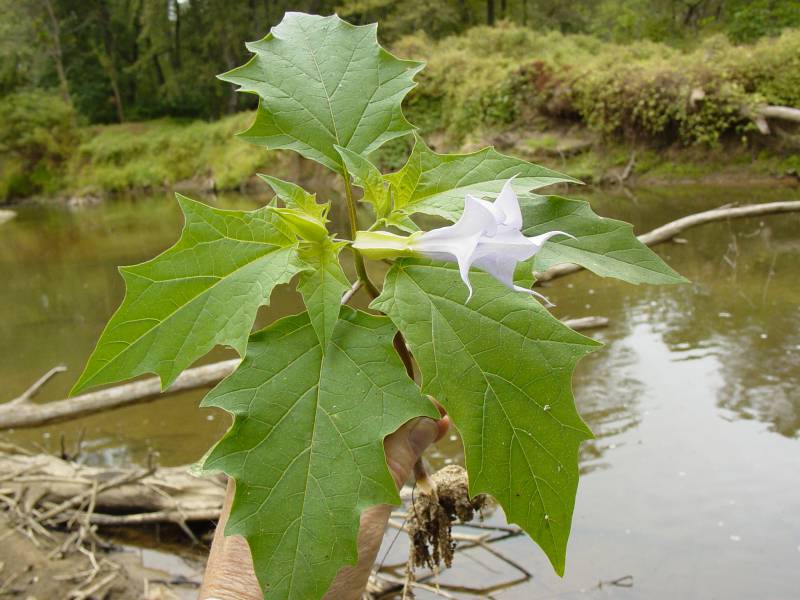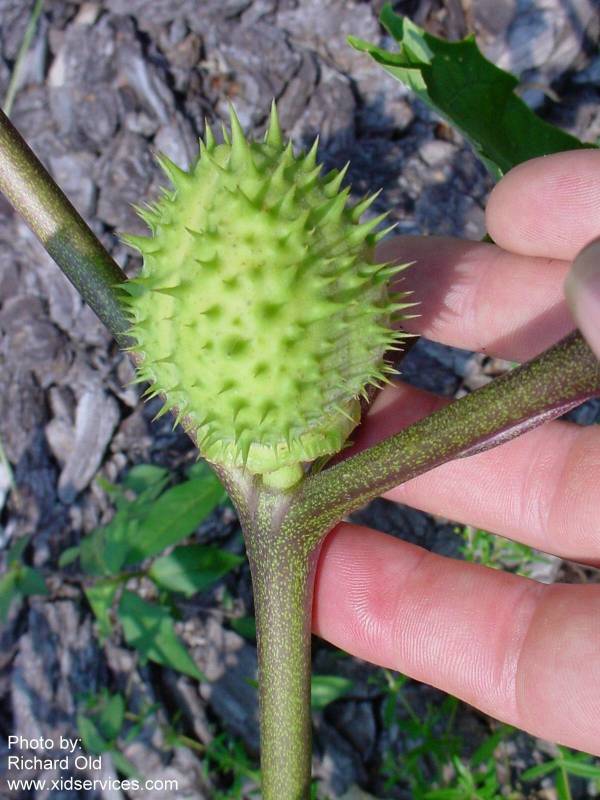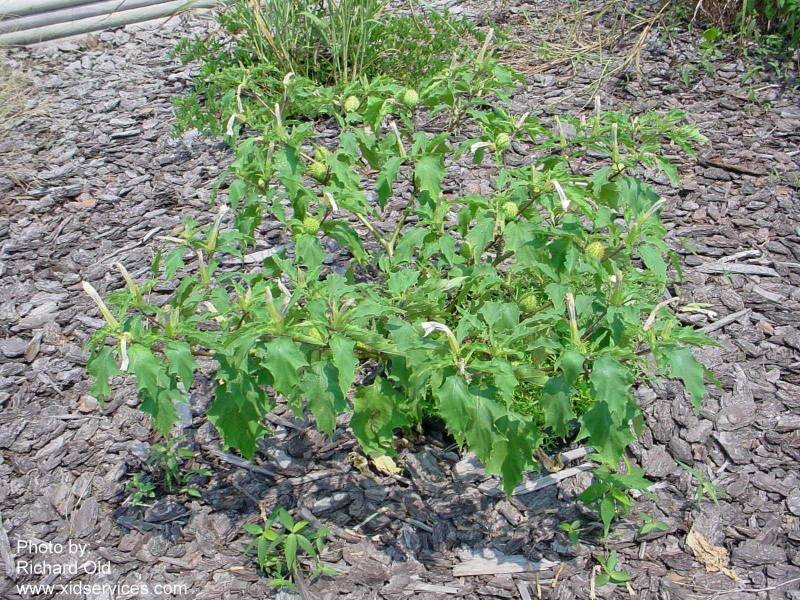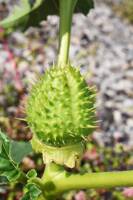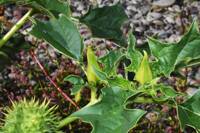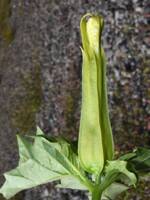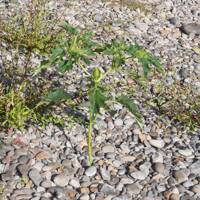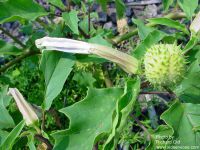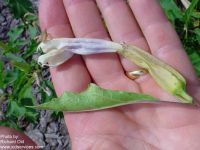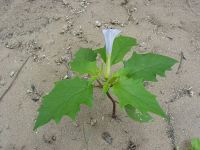Distribution: Occurring on both sides of the Cascades crest in Washington; British Columbia to California, east across North America to the Atlantic Coast.
Habitat: Waste places and roadsides, often in dry soil.
Flowers: June-August
Origin: Introduced from Central and South America
Growth Duration: Annual
Conservation Status: Not of concern
Pollination: Bees, moths
Coarse, poisonous annual, the stem up to 1.5 m. tall, often divaricately branched, inconspicuously puberulent.
Leaves petiolate, the blade large, coarsely few-lobed or few-toothed, the teeth pointed, up to 2 dm. long and 1.5 dm. wide.
Flowers solitary and terminal on the branches, but at maturity appearing to be in the forks of branches; calyx tube cylindric, 3.5-5 cm. long, with 5 short, pointed teeth; corolla white, narrowly funnel-shaped, 6-10 cm. long, the limb 3-5 cm. wide, shallowly 5-lobed and with slender projecting teeth up to 1 cm. long; stamens 5, included, attached to the corolla tube alternate with the lobes; style solitary; ovary 2-carpellary and 4-celled, superior.
Capsule ovoid, spiny, 3-5 cm. long. with a collar of the persistent base of the calyx.
Publication: Sp. Pl. 1: 179. 1753.
Datura stramonium L. var. tatula (L.) Torr. [HC]
PNW Herbaria: Specimen records of Datura stramonium in the Consortium of Pacific Northwest Herbaria database
WA Flora Checklist: Datura stramonium checklist entry
OregonFlora: Datura stramonium information
E-Flora BC: Datura stramonium atlas page
CalPhotos: Datura stramonium photos

